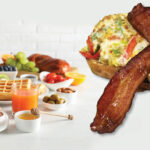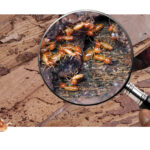
What’s For Brunch? SWLA Restaurants Offer An Array of Delicious Spreads
April 2025
Spring Pest Protection: Stay One Step Ahead of Termite Swarms
April 2025by Kerri Cooke
If a night out for dinner is considered romantic, brunch can be described as alluring.
The meal combining breakfast and lunch is a decadent weekend celebration you can indulge in after a long week. It represents lingering in bed a little longer in the morning, dining in at a picturesque location, and ordering some delightfully Instagrammable food. Since brunch menus vary from daily menus, they usually have special dishes offered exclusively for the weekend crowd.
But brunch is more than a meal. It’s prime time to socialize with family and friends after Sunday services. Bonding over food is a tale as old as time itself.
So when did the concept of brunch become part of popular culture? The word “brunch” first appeared in a story in Hunter’s Weekly by Guy Beringer in Great Britain in 1895. Beringer’s idea of brunch was a social occasion in which the food was not as heavy as an after-church meal. Its goal was to “[sweep] away the worries and cobwebs of the week.” Another potential origin of brunch is rooted in a different British tradition—the morning hunt so popular with the upper class. Refreshed from sport, the group would gather around the table to share a special meal.
The idea of brunch crossed the Atlantic, and while there are indications it was indulged in on a small scale in the 1920s, it became a social phenomenon in the 1930s with upper crust socialites. Famous luxury hotels began offering brunch to lure in customers, especially as many restaurants were closed on Sundays. The Plaza and The Waldorf-Astoria in New York were two hotels known for their extravagant spreads.
A mid-morning meal was also perfect for actors and those traveling cross-country by railway. After arriving at their destination, they could easily find a restaurant or hotel to offer them light refreshments in a relaxed environment. In addition to being trendy, brunch was functional.
Brunch wasn’t just reserved for hotels and restaurants, though. Housewives began concocting their own menus consisting of foods such as bacon, eggs, donuts and a variety of baked goods, along with cups of orange juice, coffee, and tea. It was an economical way to provide a good meal as the United States was still emerging from The Great Depression.
Today, people have access to any type of brunch they desire. Offerings vary greatly by restaurant, but most serve the bottomless mimosas so synonymous with modern brunch. The weekend is the perfect time to relax, take a break from cooking, catch up with loved ones and indulge in curated cuisine from local eateries.






